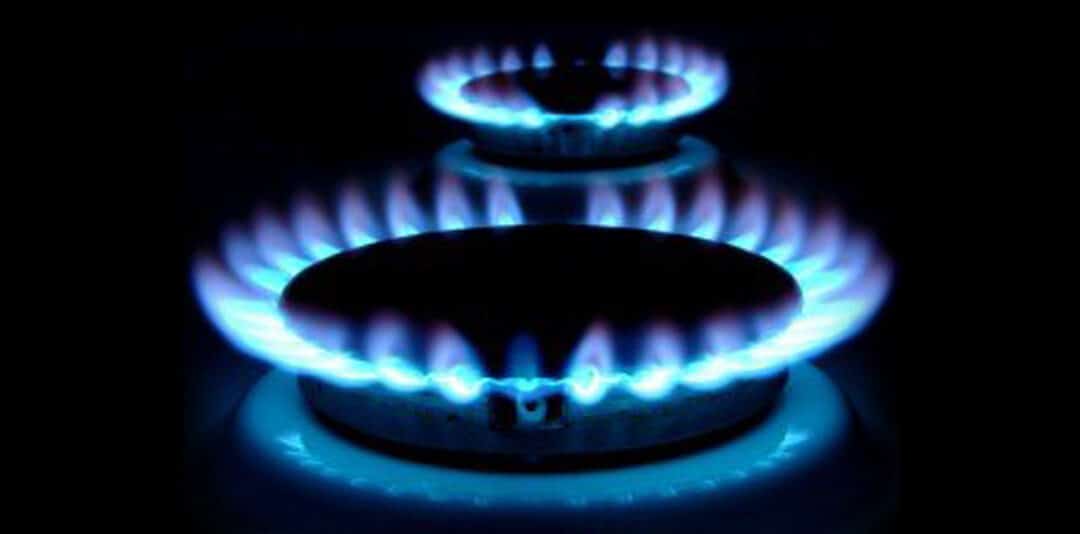by RichardGardiner | Feb 18, 2013 | Energy
 A new face has joined the TUMG team this year – Jonathan Woodbridge Buys is the company’s new Energy & Environment Technology Associate. Jonathan’s role is to help clients increase their operational efficiency and reduce consumption of electricity, gas and water at source.
A new face has joined the TUMG team this year – Jonathan Woodbridge Buys is the company’s new Energy & Environment Technology Associate. Jonathan’s role is to help clients increase their operational efficiency and reduce consumption of electricity, gas and water at source.
This service will further build upon TUMG’s long-standing success reducing utilities costs by securing the best tariffs and terms through individual and bulk tenders. In short, TUMG can now sum up its complete service offering as ‘spend less and consume less’.
Jonathan strong track record applying for and accessing EECA grants for energy saving projects on behalf of organisations like Sky City and Manukau City Council will also offer clients a significant advantage, says Managing Director Richard Gardiner.
“Jonathan has a wealth of experience and has proved his worth many times over in previous roles. We are delighted to welcome him to the team and look forward to introducing Jonathan to our clients over the coming months,” he said.
During a five year stint as Energy Manager at Sky City, Jonathan was responsible for projects which won two commendations from the 2010 EECA Energy Awards and commendations in the 2010 IES Lighting Awards. (more…)
by RichardGardiner | Sep 14, 2012 | Energy
 Coping with the worst recession in living memory has forced businesses to leave no stone unturned in the quest to improve their bottom line. Electricity is one cost that impacts on everyone and businesses impacted by the deregulated NZ energy markets fall into two basic categories:
Coping with the worst recession in living memory has forced businesses to leave no stone unturned in the quest to improve their bottom line. Electricity is one cost that impacts on everyone and businesses impacted by the deregulated NZ energy markets fall into two basic categories:
1. Non-time of Use customers
Businesses with energy usage per ICP (Installation Connection Point) below approximately 200000 kWh per year (the actual figure varies dependent on the local lines company) are likely to be supplied on a non-time of use basis. These sites will have a standard non-TOU meter and be billed per kWh used and days supplied. This billing approach is similar to the metering of residential customers, although business electricity rates are generally significantly better.
2. Time of Use customers (TOU)
Businesses with energy usage per site above the 200000 kWh threshold will most likely be TOU customers. TOU rates are typically split into either 48-rate pricing (4 energy rates per month) or 144-rate pricing (12 rates per month). TOU pricing is customer specific although it is heavily impacted by prevailing market conditions when going out to tender. (more…)
by RichardGardiner | Sep 3, 2012 | Energy, ICT, Waste

The TUMG Team
Marc Wendelborn looks at why negotiating new utilities contracts doesn’t have to be a painful process.
Negotiating supply contracts for electricity, natural gas, waste, and telecommunications is no fun. You have to do your homework, have meetings with potential suppliers, negotiate a mine-field of small print, and possibly still not get the best deal available.
This is where a utilities broker can be useful. A broker can provide unbiased, expert advice on the services and pricing across all suppliers, answering questions such as which retailer you should buy from, how to compare confusing contract offers and how to negotiate the right contract terms.
Analysts take your utilities needs to market through an Request For Proposal process and come back with a clear and concise range of contract options with the aim of minimising cost on a ‘like for like’ pricing analysis of all offers. They also look to benefit you tactically by advising and negotiating supply agreements that expire at the best time of the year.
For telecommunications, a utilities broker looks to find the best supplier to meet the current and future requirements of the business. Analysts should follow a transparent selection process with measureable criteria that takes into account reliability of service provider, reduced costs and any other specific business needs.
And for waste services, minimising costs and maximising the proportion of waste that is recycled are the markers of a good utilities broker.
We looked at four businesses using the services of utilities broker Total Utilities Management Group (TUMG) to see how well they’d been served by a broker.
The Textile Centre
The Textile Centre is home to some of the city’s high flying technology, public relations, advertising companies and other businesses. The commercial property business owns properties covering 27,000msq.
Chief Executive, John Morgan, used TUMG to investigate power savings.
“We felt that they would be able to get better market information than we could access on our own. We grew up with Mercury and Vector and felt TUMG would be able to research the whole market independently, rather than us spending time and energy going out and doing the job ourselves.”
“There were no issues around small print at all and the contracts were presented on a like for like basis. All the contracts came back with prices based on between three and five years’ supply. Four companies offered comparative quotes, one of which was dismissed pretty quickly, and our existing supplier actually won back the right to continue to supply the company.”
“We saved about $140,000.”
“The process was very smooth. It’s probably one of the best examples I’ve seen. It was done promptly and there was a visit here to me. We had to provide two or three months indicative billing so they could get the number of kilowatts that had been used and the money paid. Armed with that information they did their research, went out to the suppliers and they were back to me within a fortnight.”
Swimtastic
Swimtastic is a learn-to-swim school running structured lessons for pre-schoolers, school age children and adults in a purpose built facility in the Eastern suburbs of Auckland.
“We use a lot of gas and electricity,” says Swimtastic’s founder and director Mark Bone, “and we felt that a utilities broker could seek out the best deal for us, allowing our company to focus on its core operation.”
“The utilities broker talked me through all the contract small print, reducing any misunderstanding and focusing on the best deal.”
“The broker sought out and negotiated the best deal on our behalf. The process was smooth and hassle free. Savings have been significant. It was a fantastic experience.”
Mamaku Blueberries
Mamaku Blueberries grows about 30 tonnes of blueberries per year for wines, liqueurs, pure juices, jams, sauces, chocolates and real fruit ice cream in addition to offering farm and winery tours.
“We were looking to cut costs and thought we’d give TUMG a try,” says Harry Frost of Mamaku Blueberries.
“Their analyst came back to us with four options, showed us they compared and the savings each offered per year – the best was $4000 a year. That sounded like a fair bit to me.”
“He went through everything pretty carefully, the different situations, rules and regulations, the fine print, which was very helpful as it cut through the technical jargon.”
“Because we were so impressed, we were able to refer them onto other small businesses in the area like dairy farms and so on.”
Galvanising Services
Onehunga company Galvanising Services Ltd. applies molten zinc as a protective coating to industrial steel to prevent corrosion.
Manager Andrew Lonsdale Cooper says that prior to contacting TUMG he spent a lot of time messing around with different companies and getting the run around.
“TUMG came along and offered me a the chance to join a bulk tender that looked pretty good, because I could jump on board with a whole lot of other small manufacturers like ourselves and take advantage of some economies of scale.
“They negotiated gas and power contracts for us, and the best part was the convenience – it saved me a hell of a lot of time dealing with people in areas outside of my expertise.”
“The process was smooth. The contracts were presented to us in a report that made it easy for me to compare the various offers on the table. There were no problems with small print and ultimately it’s saved me thousands of dollars.”
“Overall, it’s a pretty efficient, effective, reasonable service to have.”
As published in NZ Business Magazine September, 2012

by RichardGardiner | Jun 26, 2012 | Energy
There has been much debate recently about the sell-off of State Owned Enterprises – both in the media and across boardroom tables. However in the public arena, debate has not focused much on the fact that privately owned companies are already growing at the expense of public power companies and have been doing so for quite some time.
This is mainly due to the fact that private power companies like TrustPower and Contact Energy are able to make decisions on a purely commercial basis unhampered by political restraint. This makes them more responsive to the changing market and consumer needs.
When seen in this context, much of the emotion is taken out of the debate around the SOE sell off. Most Kiwis, myself included, feel strongly about keeping our national assets, but the cold hard reality of life is that the SOE sell off is going ahead. We could miss a trick if we get too wrapped up in debating whether or not the assets should be sold – and fail to look closely at the parameters that are set to govern the sale process.
I would have no problem with selling 25%-30% of these SOE’s but would like to see us keeping at least 70% locally owned. In Australia, politicians have limited the sale of strategic state assets to any one foreign owner to 25%. This pragmatic arrangement works well with Qantas and could surely do the same for our SOE’s.

by Jonathan Gardiner | May 21, 2012 | Energy
Renegotiate your gas contracts within the next 12 months or risk being tied into contracts based on higher unit costs – that’s the advice from specialist power, gas and ICT procurement specialists, Total Utilities Management Group.
Gas customers have been enjoying favourable pricing since 2009 as a result of ‘Take or Pay contracts’ in place between gas-based electricity generators and their wholesale gas suppliers. These contracts commit energy/gas retailers to buying a certain amount of gas at a set rate, irrespective of the amount sold on. This has periodically resulted in retailers looking for a good home for their excess gas – with near wholesale prices being offered to some retail customers as a consequence. But be aware, these ‘Take or Pay’ contracts are due to expire within the next 12 months as we understand it.
Prior to 2009 the trend of rising gas prices caused an increase in the size of the recoverable reserves in the Maui Gas Field. This also had a dampening effect on the market rate – all good news for consumers. However, the pockets of gas from Maui are now becoming less reliable – the first reserves extracted were graded P85 (85% probability of successful extraction) but we’re now moving towards P50 reserves (50% probability) and this leads to increased retailer uncertainty which means that more risk, and therefore more cost, is built into customer contracts.
These two trends add up to a strong indication that the clock is ticking for this period of low natural gas pricing. Unless something significant changes, we believe that the current period of low pricing will last for less than 12 months. TUMG is currently bringing forward our client’s major natural gas negotiations so that we can lock in the low pricing for the next three years.
Our most recent bulk gas tender, completed in March this year covered a diverse range of customers, large and small, and achieved savings averaging $53,900 per customer over a three-year period for 19 of the 22 customers. Five customers cut their gas costs by between 22% and 36%. If you’d like advice or support in any utilities contract negotiation, just give us a call on 09 576 2107 or email [email protected]

by RichardGardiner | Feb 20, 2012 | Energy, Waste
At a time when every sector in New Zealand is feeling the pinch, 102 schools across New Zealand have found a way of making their money go further.
Part of the solution for a large number of primary, intermediate and high school business managers has been to bring in specialist services to negotiate their power, gas and waste services contracts to make sure that their schools are not paying over the odds.
According to school business managers, bringing in third parties makes sense on a number of levels. Having to deal with a wide range of different tasks is one of the challenges managers face on a daily basis, this makes it impossible to be an expert across the board. Buying in expertise and handing over the more specialist jobs seems to be a logical step.
Business Manager at Pakuranga College, Graeme Brown is an advocate of this approach. “Over the 11 years that I’ve been in this job, I’ve come to realise that it makes sense to leave utilities contract negotiation to the experts. I don’t even think about our contracts now, TUMG notify us when they are due for renewal – it’s great to have something taken off my list of priorities.”
The opportunity to join forces with other schools and go out to market in bulk tenders is another plus point for bringing in a specialist. Richard Gardiner at Total Utilities Management Group (TUMG) has been putting together power, gas and waste services bulk tenders for ten years and sees them bringing real advantage to his clients.
“When we put out a bulk Request for Proposal to suppliers, the bigger the piece of business, the sharper the pricing tends to be.”
But Mr Gardiner is quick to stress that it’s not all about the price. (more…)
 A new face has joined the TUMG team this year – Jonathan Woodbridge Buys is the company’s new Energy & Environment Technology Associate. Jonathan’s role is to help clients increase their operational efficiency and reduce consumption of electricity, gas and water at source.
A new face has joined the TUMG team this year – Jonathan Woodbridge Buys is the company’s new Energy & Environment Technology Associate. Jonathan’s role is to help clients increase their operational efficiency and reduce consumption of electricity, gas and water at source.




